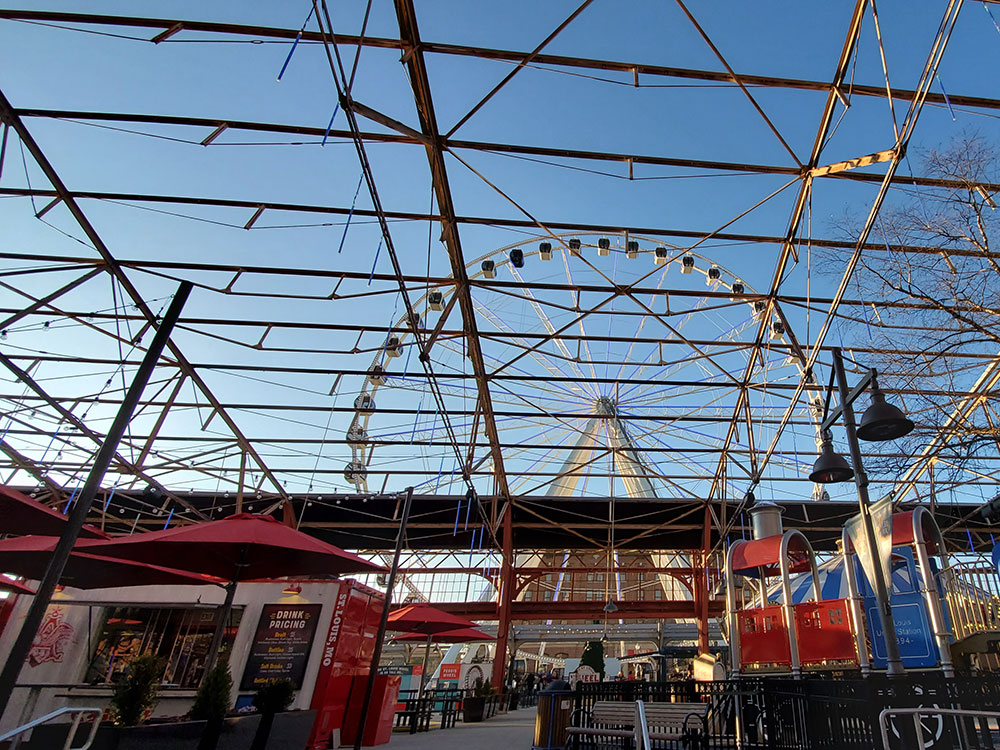General Information
St. Louis Union Station is a National Historic Landmark train station in St. Louis, Missouri. At its 1894 opening, the station was the largest in the world that had tracks and passenger service areas all on one level. Traffic peaked at 100,000 people a day the 1940s. The last Amtrak passenger train left the station in 1978.

St. Louis Union Station is a National Historic Landmark train station in St. Louis, Missouri. At its 1894 opening, the station was the largest in the world that had tracks and passenger service areas all on one level. Traffic peaked at 100,000 people a day the 1940s. The last Amtrak passenger train left the station in 1978.
In the 1980s, it was renovated as a hotel, shopping center, and entertainment complex. The 2010s and 2020s saw more renovation and expansion of entertainment and office capacity.
The station was opened on September 1, 1894, by the Terminal Railroad Association of St. Louis. The station was designed by Theodore Link, and included three main areas: the Headhouse and the Midway, and the 11.5-acre (47,000 m2) Train Shed designed by civil engineer George H. Pegram. The headhouse originally housed a hotel, a restaurant, passenger waiting rooms and railroad ticketing offices. It featured a gold-leafed Grand Hall, Romanesque arches, a 65-foot (20 m) barrel-vaulted ceiling and stained-glass windows. The clock tower is 230 feet (70 m) high.
Union Station's headhouse and midway are constructed of Indiana limestone and initially included 32 tracks under its vast trainshed terminating in the stub-end terminal. Its Grand Hall, which cost around $6.5 million and was about 75 by 125 feet large, was considered to be one of the most beautiful, public lobbies.
In 1903, Union Station was expanded to accommodate visitors to the 1904 St. Louis World's Fair. In the 1920s, it remained the largest American railroad terminal.
At its height, the station combined the St. Louis passenger services of 22 railroads, the most of any single terminal in the world. In the 1940s, it handled 100,000 passengers a day. The famous photograph of Harry S. Truman holding aloft the erroneous Chicago Tribune headline, "Dewey Defeats Truman", was shot at the station as Truman headed back to Washington, D.C., from Independence, Missouri, after the 1948 Presidential election.
The station was designated a National Historic Landmark in 1970, as an important surviving example of large-scale railroad architecture from the late 19th century. It was designated as a National Historic Civil Engineering Landmark by the American Society of Civil Engineers in 1981.
Today, the station is home to the St. Louis Aquarium. At 120,000 square feet, the aquarium is home to more than 13,000 animals representing over 250 species.
The station's train shed area features The St. Louis Wheel, a 200-foot-high, 42 gondola observation wheel.
Inside the station is The St. Louis Rope Course, a 90,000 cubic foot, 3-story indoor ropes and zip line course.
Union Station has two light show features: one in the train shed area, and another inside Union Station Hotel's lobby.
This article uses material from the Wikipedia article "Union Station (St. Louis)", which is released under the Creative Commons Attribution-Share-Alike License 3.0